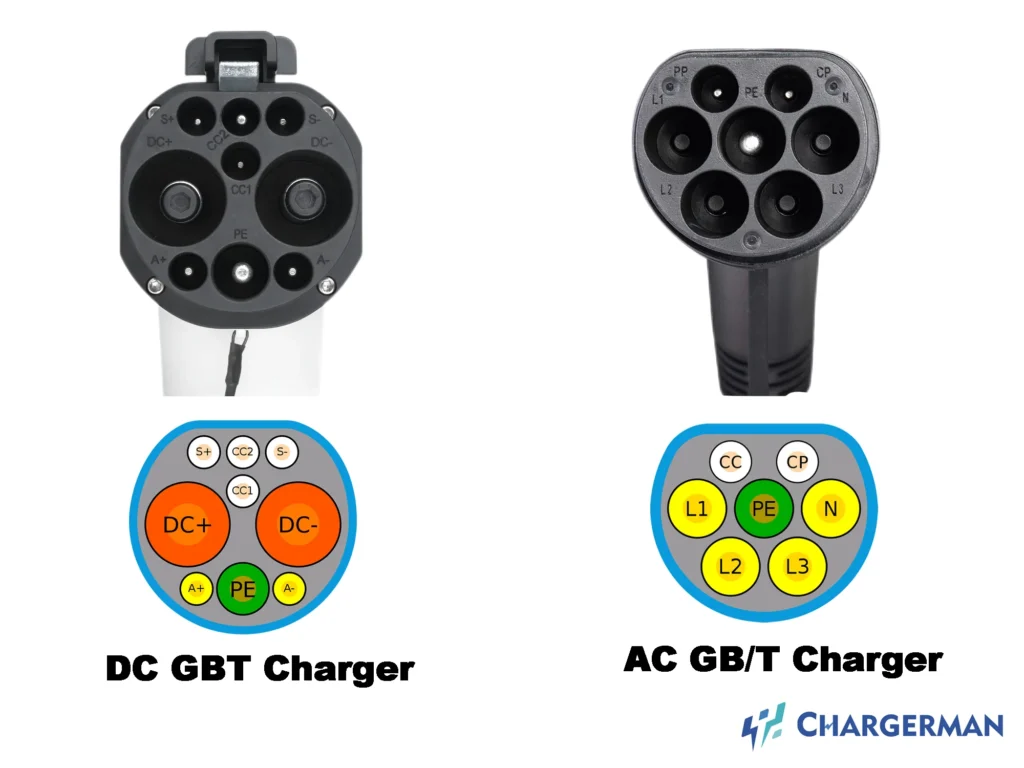/In recent years, as electric vehicles (EVs) have surged in popularity, the demand for standardized charging protocols has become increasingly critical. One such standard that has gained prominence, particularly in China, is the GB/T charging protocol. This article aims to provide an in-depth understanding of GB/T charging, its technical specifications, its significance within the broader context of electric vehicle infrastructure, and its impact on the future of electric mobility.

The Genesis of GB/T Charging
GB/T charging refers to a charging standard established by the National Standards of the People’s Republic of China. The designation “GB/T” stands for “Guobiao Tian,” which translates to “national standard” in Chinese. Initially introduced in 2011 and further refined in subsequent years, the GB/T charging standard was developed to promote uniformity and interoperability among charging systems in the rapidly growing Chinese electric vehicle market.
Technical Specifications of GB/T Charging
The GB/T standard encompasses several key specifications that define its operational framework:
- Voltage and Current Ratings: The GB/T standard supports a wide range of voltage and current ratings to accommodate various electric vehicle configurations. Typically, GB/T charging stations can operate at a voltage of 220V for AC (alternating current) charging and up to 600V for DC (direct current) fast charging. The current rating can reach up to 250A for DC charging, allowing for faster charging times.
- Connector Types: The GB/T standard outlines two different connectors: one for AC charging and another for DC charging. The AC connector is a Type 2 connector, while the DC connector is a unique design specifically developed for the GB/T standard. This differentiation ensures that EVs can be charged efficiently and safely using either charging method.
- Communication Protocols: Effective communication between the electric vehicle and the charging station is paramount for efficient charging. GB/T incorporates a set of communication protocols that allows the charging station to communicate critical information, such as charging status, battery capacity, and voltage requirements. This ensures a seamless charging experience for the user.
- Safety Standards: Safety is a prime concern in electric vehicle charging. The GB/T standard adheres to stringent safety protocols, including protections against overcurrent, over-voltage, short circuits, and ground faults. These safety measures are essential for the protection of both the vehicle and the electrical infrastructure.
The Importance of GB/T Charging
Standardization in a Growing Market
As the electric vehicle market in China has expanded rapidly, so has the need for a standardized charging solution. GB/T charging provides a unified framework that allows for the widespread deployment of charging infrastructure across the country. This standardization is critical for ensuring that consumers can easily find compatible charging stations, thereby mitigating range anxiety and promoting the adoption of electric vehicles.
Promoting Domestic Chinese Manufacturing
The GB/T standard has also contributed to the growth of China’s domestic manufacturing sector. By establishing a national standard, the Chinese government has incentivized local manufacturers to produce EVs and charging equipment that adhere to the GB/T specifications. This not only bolsters the local economy but also enhances national energy security by reducing reliance on foreign technology and components.
Compatibility and Interoperability
Another significant advantage of the GB/T standard is its emphasis on compatibility and interoperability. As more electric vehicle manufacturers enter the market, the GB/T standard ensures that vehicles from different manufacturers can utilize the same charging infrastructure. This harmonious interaction is key to building a robust charging network that can accommodate a diverse range of electric vehicles.
Challenges and Considerations
While the GB/T standard has been instrumental in the growth of electric vehicle charging infrastructure in China, it is not without its challenges. Some notable considerations include:
Competition with Global Standards
While GB/T has established itself as the dominant standard within China, it faces competition from global standards such as CCS (Combined Charging System) and CHAdeMO. This situation creates potential compatibility issues for foreign electric vehicle manufacturers that struggle to integrate their vehicles seamlessly into the Chinese charging landscape. Consequently, international automakers operating in China often find themselves navigating a complex regulatory and technological landscape.
Infrastructure Development
The successful implementation of the GB/T charging standard depends heavily on the availability of charging infrastructure. While the Chinese government has made significant investments in expanding the charging network, the pace of infrastructure development must keep up with the rapid growth in electric vehicle adoption. This includes not only the installation of charging stations but also ensuring adequate power supply capabilities in urban and rural areas alike.
Consumer Awareness and Education
Despite the advantages of the GB/T standard, consumer awareness and understanding of the charging process remain critical hurdles. Government and industry stakeholders must work together to educate potential EV owners about the advantages of GB/T and how to efficiently use charging stations. Initiatives such as informative apps, community outreach programs, and partnerships with automakers can help bridge this knowledge gap.
Future Prospects for GB/T Charging
Looking ahead, the prospects for GB/T charging appear promising. The continued growth of the electric vehicle market in China, combined with increasing governmental support for sustainable transportation, will drive the adoption of the GB/T standard. Furthermore, ongoing advancements in battery technology, which aim to increase range and reduce charging times, will enhance the overall charging experience for consumers.
Integration with Renewable Energy
One of the most exciting developments on the horizon is the potential integration of GB/T charging systems with renewable energy sources. As China intensifies its commitment to sustainable energy, the combination of electric vehicle charging and solar, wind, and other renewable energy sources could lead to a significant reduction in carbon emissions. This synergy will not only support environmental goals but also pave the way for more affordable and sustainable charging solutions for consumers.
Global Influence
As the global electric vehicle market continues to evolve, the success of the GB/T charging standard may provide a blueprint for other regions seeking to develop their own charging infrastructure. Lessons learned from the implementation of GB/T can help inform best practices for standardization, interoperability, and infrastructure development on a global scale.
Conclusion
In summary, GB/T charging stands as a pivotal standard in the rapidly evolving landscape of electric mobility in China. With its comprehensive technical specifications, emphasis on safety, and commitment to interoperability, GB/T has established itself as a cornerstone of the nation’s charging infrastructure. As the electric vehicle market continues to expand, the importance of GB/T charging is expected to grow alongside it, shaping the future of sustainable transportation not just in China, but potentially around the world. The journey towards electric mobility is complex, but with standards like GB/T in place, it is a journey that holds great promise for a greener future. cnautozone car expert

